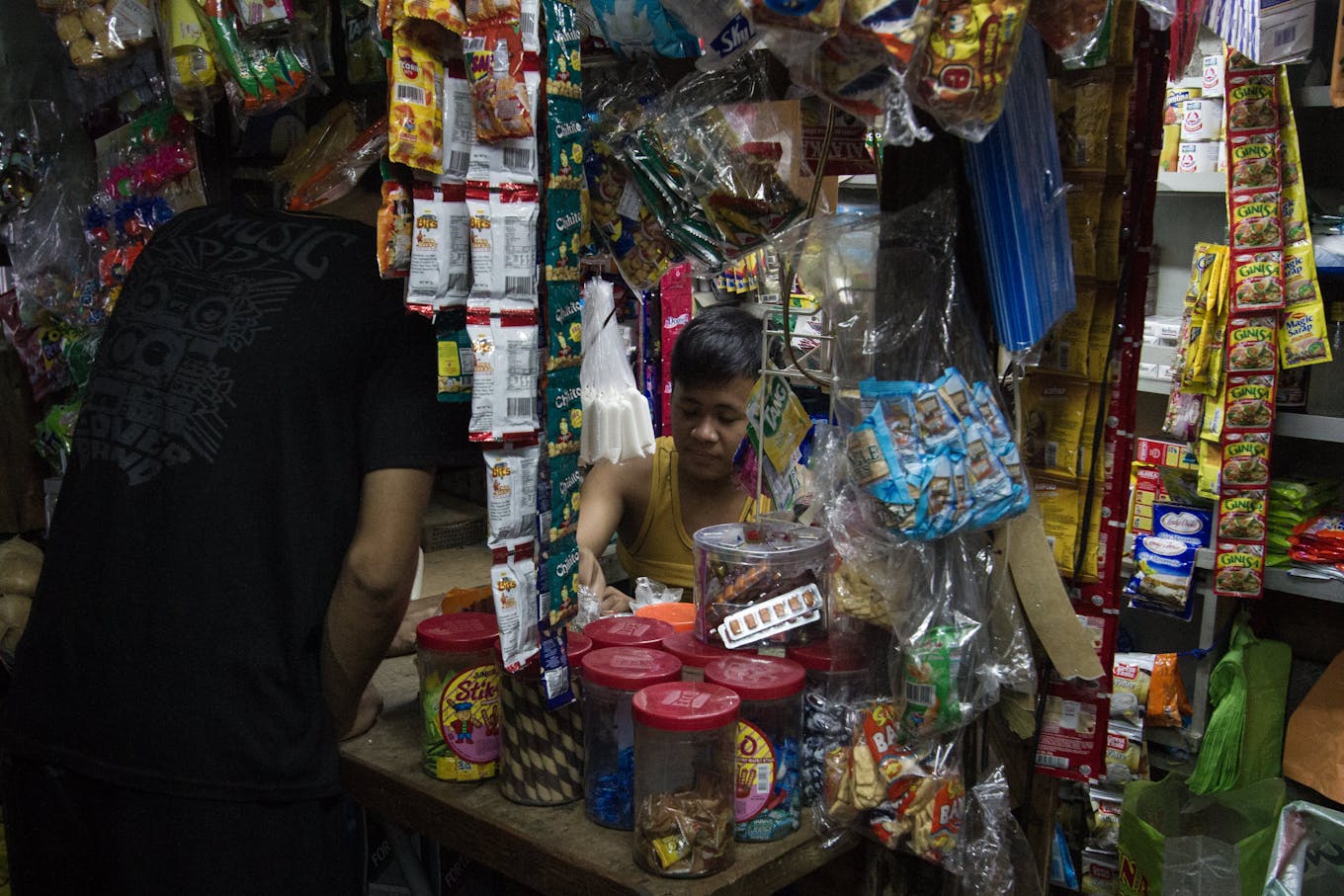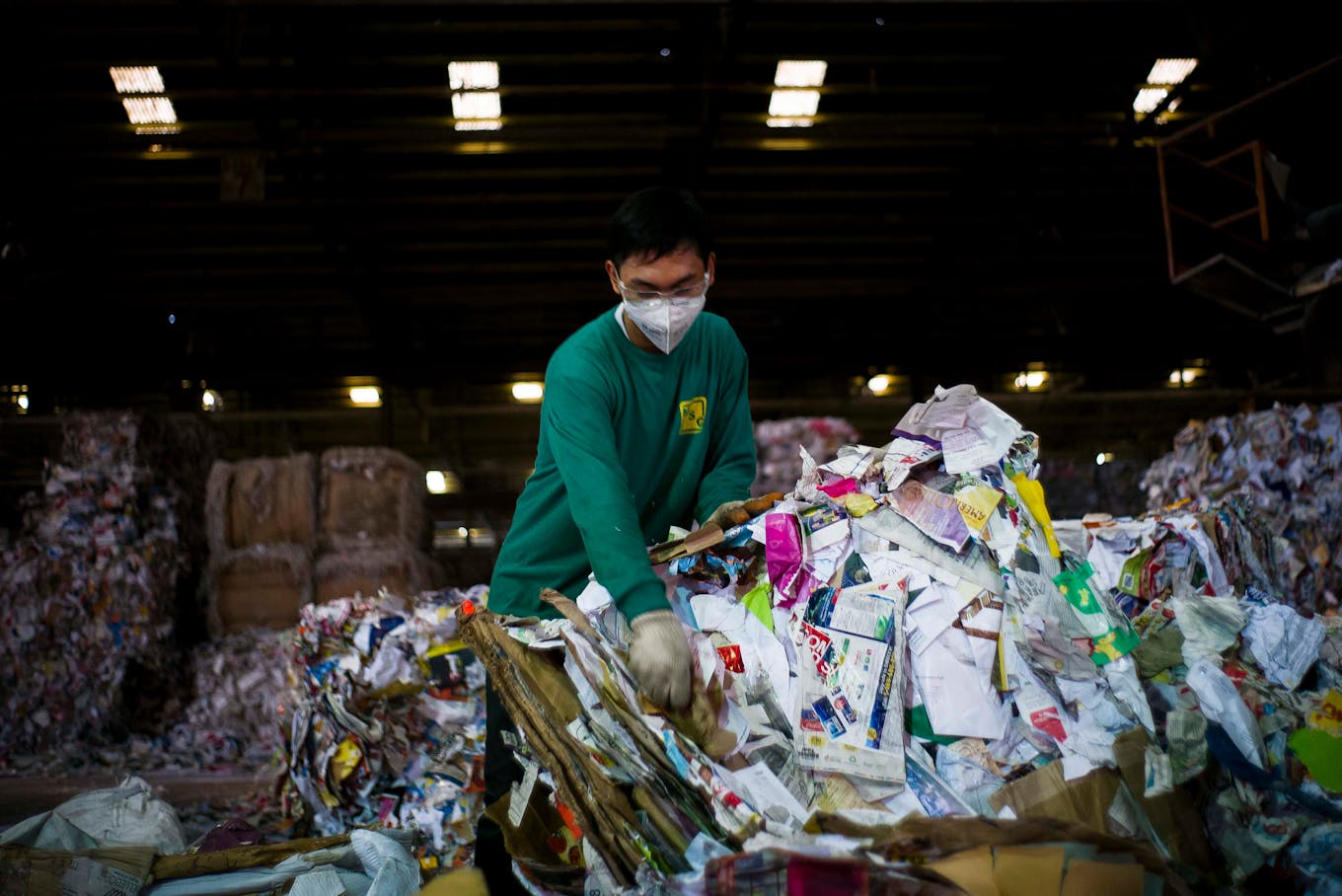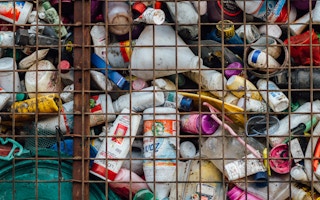In key cities across the Philippines like Cebu, Iloilo and Cagayan de Oro, consumers have found it hard to quit their reliance on single-use packaging for even the most basic daily commodities, and large amounts of plastic waste are ending up in landfills and rivers, given the constraints of a lacking nation-wide solid waste management infrastructure.
To continue reading, subscribe to Eco‑Business.
There's something for everyone. We offer a range of subscription plans.
- Access our stories and receive our Insights Weekly newsletter with the free EB Member plan.
- Unlock unlimited access to our content and archive with EB Circle.
- Publish your content with EB Premium.
This remains the stark reality more than a year since the Extended Producer Responsibility (EPR) Act, a polluter-pays regulation was passed in the archipelagic nation. Under the new law, some of the country’s largest corporate polluters, with total assets worth more than P100 million (US$1.8 million) are mandated to recover at least a fifth of the plastic they produced last year in 2023.
As of mid-October, however, only 745 out of around 4,000 Trade Department-registered large enterprises have submitted their EPR schemes with the country’s environment and natural resources department (DENR). At a media briefing, DENR undersecretary Jonas Leones confirmed that the tally of compliant industries has fallen short of the agency’s initial goal to have 1,000 EPR-compliant registered enterprises this year.
For many cities in the Philippines, the plastic waste scourge is still very much a visible problem. Detailed waste analyses of recovered plastic in the nation’s most-urbanised cities also reflects how urgent the situation is. For example, in Cagayan de Oro, the second-largest economy in the southern Philippines’ Mindanao group of islands, about 573,863 cubic metres of solid waste – enough to fill about 230 Olympic-sized swimming pools – are still produced annually. In September this year, Cagayan de Oro volunteers reported collecting some 18 tonnes of non-biodegradable garbage from the city’s shoreline in a single day.
“
Half of the country lives in municipalities along the shoreline – distant from the bigger economies and sanitary services. Meanwhile, the other half live in cities where access to recyclers and other services may be much easier, but the waste management system is overwhelmed by the sheer number of people.
Johannes Paul, Philippine project lead, Deutsche Gesellschaft für Internationale Zusammenarbeit
“A significant challenge to the EPR Act is the ‘sachet economy’, a phenomenon unique to developing economies like the Philippines and that reflects the buying behaviour of the Filipinos,” environmental engineer Johannes Paul told Eco-Business. Paul is the project leader of the German Agency for International Cooperation GIZ (Deutsche Gesellschaft für Internationale Zusammenarbeit) in the Philippines.
According to a Pew Charitable Trusts report, consumption of sachets or palm-sized multi-layered plastic pouches used to package daily necessities like shampoos and food seasoning in low-income countries such as the Philippines is at least four times higher than in high-income economies. In the archipelago, almost 20 million Filipino families or about 18 per cent of the national population live below the poverty line and can only afford to pay for the commodities in small quantities to make ends’ meet.
Paul said that these flexible packaging is often made up of layers of polymer and aluminium films that are difficult to separate and reprocess.
“The solution is to make sustainable alternatives [to sachets] more accessible – to replace multilayer sachets with potentially biodegradable or mono-material packaging – or implement feasible consumer ‘bring-back’ systems that incentivise buyers to trade in their sachet waste,” he said.
Choking creeks
Statistics from waste analyses also shows that there is a challenge in recovering the sachets. One that looked at Iloilo City in Panay Island, which is estimated to produce 23,200 tonnes of plastic waste annually, found that only 7 per cent of the city’s recovered plastic waste was from personal care products.
The study, conducted by the Iloilo City Environment and Natural Resources Office (CENRO) in partnership with a local university, documented plastic waste from at least 483 enterprises and producers that was recovered from the city’s two major creeks – the Dungon and Calajunan Creeks.

Snack and seasoning sachets hang from the market stall of a vendor in Sampaloc, Manila in the Philippines. Image: Adam Cohn, CC BY-SA 3.0, via Flickr.
Some 16 per cent of the nearly 290 kilogrammes of waste recovered from the two bodies of water in the span of a week were discarded recyclables. Of this, 81 per cent was plastic packaging from goods produced by brands such as soft drink company Coca-Cola, fast food chain Jollibee and Japanese firm Nissin, which is known for its cup noodles.
CENRO head Engr Neil Ravena further highlighted that sachet waste numbers could be higher, given that the sachets that are thin, can sink or escape being caught by the waste interceptors installed for the study. These sachets end up choking the creeks, he said.
Straight to landfills
Experts say that the Philippines also lacks adequate waste management infrastructure and a recycling ecosystem backed by strong logistics.
“The Philippines has many islands. Half of the country lives in municipalities along the shoreline – distant from the bigger economies and sanitary services. Meanwhile, the other half live in cities where access to recyclers and other services may be much easier, but the waste management system is overwhelmed by the sheer number of people,” explained Paul.
“The implementation of the EPR Act will rely on how we harmonise the various diverse factors [of the Philippines] to achieve a green economy. It is unlikely that it can be done in a short amount of time, but we are stronger together under a green economy,” he said.
Only 245 sanitary landfills are operational in the Philippines, according to 2021 data from the National Solid Waste Management Commission (NSWMC). Equipped to process only 15 tonnes of garbage per day, sanitary landfills can only service 478 out of 1,634 of the country’s municipalities.
“Key challenges in the Philippines [include] the inconsistent implementation of waste segregation and waste diversion, wherein the significant presence of mixed wastes was found in landfills,” further highlighted a 2023 government audit.
These deficiencies are allowing some 0.75 million metric tonnes of mismanaged plastic to enter the ocean every year from the Philippines’ rivers, making the country the third-worst plastic polluter globally, after China and Indonesia.
Meanwhile, municipal solid waste in the Philippines reached 15.8 million tonnes in 2019 according to a World Bank report. Based on estimates by the NSWMC, the Philippines’ waste generation is expected to reach 23.6 million tonnes annually by 2025.
In Cebu City – the second largest metropolitan area in the Philippines after Metro Manila – 500 to 700 tonnes of mixed solid waste daily still head straight to landfills due to a shortage of functional materials recovery facilities (MRFs) in the highly urbanised city, said the region’s DENR-EMB director.
“The EPR Act and its implementation remain new to us and we are still getting the hang of it,” DENR-EMB Region 7 regional director Victoria Abrera told the media on the sidelines of the Rethinking Plastics forum in Cebu organised by Eco-Business, in partnership with food and beverage giant Nestlé.
Local government units in Cebu Island have largely had to rely on private waste management companies and facilities to get garbage off their streets. Prime Integrated Waste Solutions Inc – owned by the Philippines’ third wealthiest tycoon Enrique Razon Jr – currently collects and processes around 1,000 tonnes of Cebu City’s solid waste daily.

A worker sorts through plastic waste by hand at a recycling facility in San Fernando, Pampanga in the Philippines. Image: ILO in Asia and the Pacific, CC BY-SA 3.0, via Flickr.
Cebu City’s neighbouring Mandaue City, meanwhile, has partnered with Japan-headquartered plastic recycling company Guun Co to divert most of its recyclable waste from landfills. The Philippine branch of Guun Co is located in Consolacion north of Cebu City and can process about 50 tonnes to 75 tonnes of waste plastic per day, equivalent to a third of the volume of waste plastic Metro Cebu produces each day.
The company has been working with the city of Mandaue since 2018 to reduce the volume of its garbage sent directly to landfills by at least 40 per cent.
Guun Co uses the recovered plastic to produce ‘fluff fuel’ – a type of refuse-derived fuel produced through shredding and compressing plastics. Power generation using ‘fluff fuel’ reduces emissions by 17 per cent when compared to coal, according to the United Nations Industrial Development Organization.
In a recent statement, Hideki Yamaji, Consul General of Japan in Cebu, said that he hopes the recycling activities of facilities like Guun Co would spread throughout the country, but noted he can’t yet be “optimistic” about the future of waste management in the Philippines.
“What one private company can do is very different from what a nation can do,” said Yamaji.
‘Plastic emergency’
At the Cagayan de Oro leg of the Rethinking Plastics forum, DENR secretary Antonia Yulo-Loyzagan delivered a keynote speech emphasising the gravity of the plastic pollution crisis in the Philippines, which she said necessitates collective action.
“This year marks the first-year implementation of the EPR law. We call upon large-scale companies to establish responsible strategies for recovering, treating, recycling, and disposing of the plastics they distribute,” she said.
At the same event, congressman Rufus Rodriguez, representative of Cagayan de Oro City’s second district, stressed that the Philippines is currently facing a “plastic emergency.”
One of the principal authors of the EPR Act in Congress, Rodriguez told the media that he had initially included medium industries – businesses with total assets worth between P30 million (US$540 thousand) to P100 million (US$1.8 million) – as obliged enterprises in the bill, but this provision was vetoed by the Senate.
Rodriguez shared that he plans to file an amendment to the EPR Act before the end of his term requiring medium-sized enterprises to be compliant with the plastic recovery legislation, noting the dire circumstances of the Philippines’ solid waste management mitigation.
“As business leaders, policymakers, private stakeholders, and stewards of the environment, we must act urgently and work collectively to shape a waste-free future and help advance circularity in the country not just for us but more importantly, for the future generations,” stressed Jose Uy III, senior vice-president and head of corporate affairs at Nestlé Philippines.










